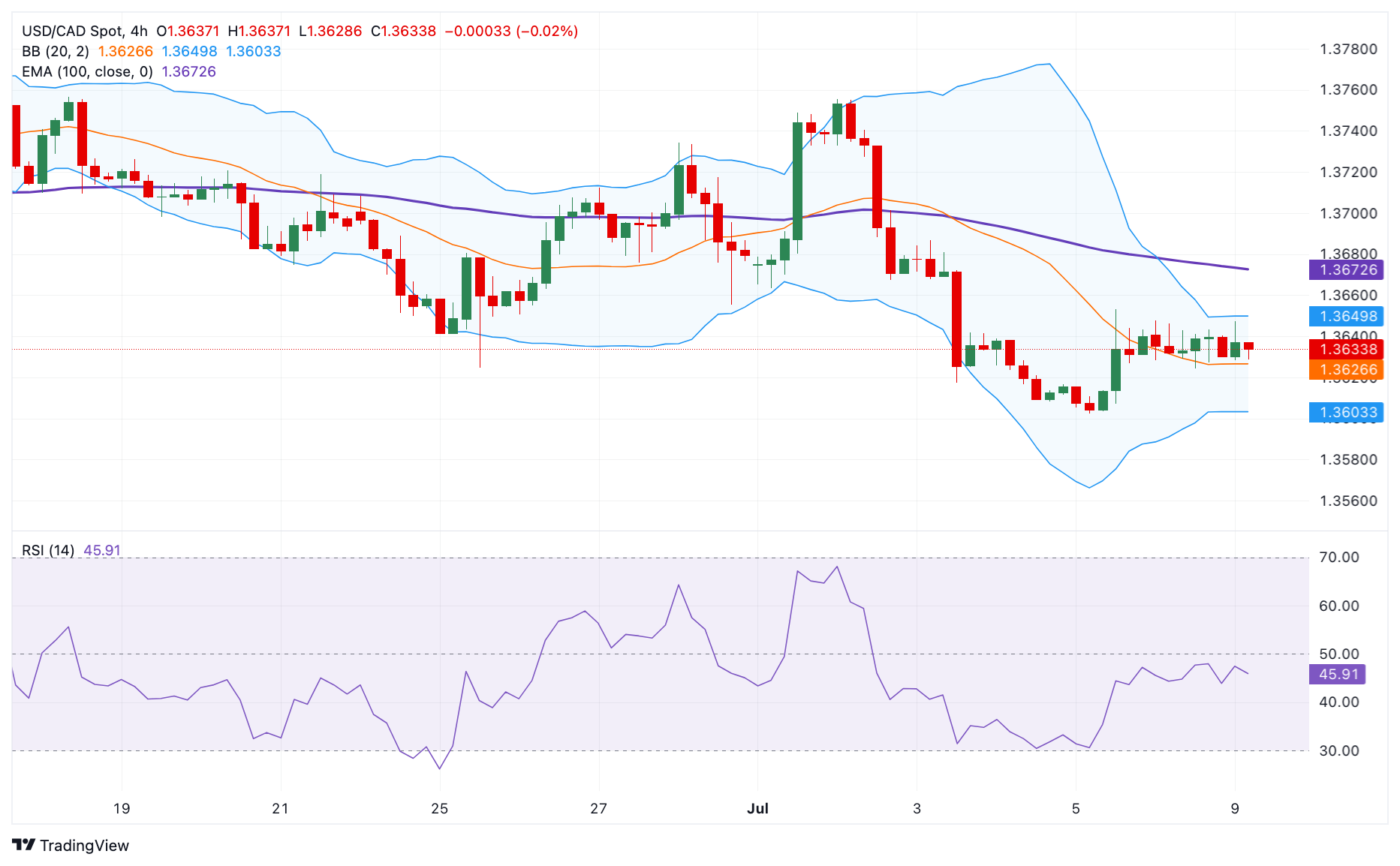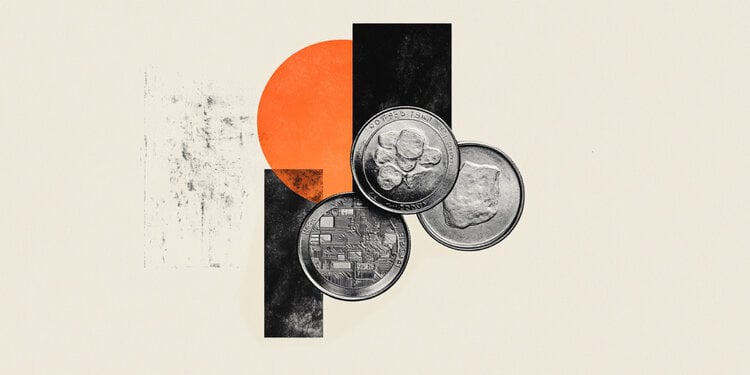- USD/CAD is trading lower near 1.3635 in early European session on Tuesday.
- The pair maintains a negative stance below the 100-period EMA, with the RSI momentum indicator bearish.
- The initial containment level will emerge near 1.3600; the first upside barrier is seen at 1.3650.
The USD/CAD pair remains on the defensive around 1.3635 during the early European session on Tuesday. The Dollar is weakening on the back of a possible rate cut in September by the US Federal Reserve (Fed) after last week’s employment data indicated a cooling US labor market.
According to the 4-hour chart, the USD/CAD is maintaining the bearish vibe unchanged below the key 100-period exponential moving average (EMA). Moreover, the downside momentum is supported by the Relative Strength Index (RSI), which is in the bearish zone near 45.70. This indicates that the path of least resistance is to the downside.
The potential support level for the pair will emerge near 1.3600, showing the confluence of the lower boundary of the Bollinger Band and the psychological level. A break of this level will see a drop to 1.3556, a low of April 10. The additional upside filter to watch is 1.3515, a low of April 1.
On the other hand, the immediate resistance level is seen at 1.3650, the upper boundary of the Bollinger Band. A decisive break above this level will pave the way towards 1.3672, the 100-period EMA. Any follow-through buying could see a rally towards 1.3712, a high of June 27.
USD/CAD 4-hour chart
Canadian Dollar FAQs
The key factors determining the Canadian dollar (CAD) are the level of interest rates set by the Bank of Canada (BoC), the price of oil, Canada’s main export, the health of its economy, inflation and the trade balance, which is the difference between the value of Canadian exports and its imports. Other factors include market sentiment, i.e. whether investors are betting on riskier assets (risk-on) or looking for safe assets (risk-off), with risk-on being positive for the CAD. As its largest trading partner, the health of the US economy is also a key factor influencing the Canadian dollar.
The Bank of Canada (BoC) exerts significant influence over the Canadian dollar by setting the level of interest rates that banks can lend to each other. This influences the level of interest rates for everyone. The BoC’s main objective is to keep inflation between 1% and 3% by adjusting interest rates up or down. Relatively high interest rates are generally positive for the CAD. The Bank of Canada can also use quantitative easing and tightening to influence credit conditions, with the former being negative for the CAD and the latter being positive for the CAD.
The price of oil is a key factor influencing the value of the Canadian dollar. Oil is Canada’s largest export, so the price of oil tends to have an immediate impact on the value of the CAD. Generally, if the price of oil rises, the CAD rises as well, as aggregate demand for the currency increases. The opposite occurs if the price of oil falls. Higher oil prices also tend to lead to a higher probability of a positive trade balance, which also supports the CAD.
Although inflation has traditionally always been considered a negative factor for a currency, as it reduces the value of money, the opposite has actually occurred in modern times, with the relaxation of cross-border capital controls. Higher inflation typically leads central banks to raise interest rates, which attracts more capital inflows from global investors looking for a lucrative place to store their money. This increases demand for the local currency, which in Canada’s case is the Canadian dollar.
The released macroeconomic data measures the health of the economy and can have an impact on the Canadian Dollar. Indicators such as GDP, manufacturing and services PMIs, employment and consumer confidence surveys can influence the direction of the CAD. A strong economy is good for the Canadian Dollar. Not only does it attract more foreign investment, but it can encourage the Bank of Canada to raise interest rates, which translates into a stronger currency. However, if the economic data is weak, the CAD is likely to fall.
Source: Fx Street
I am Joshua Winder, a senior-level journalist and editor at World Stock Market. I specialize in covering news related to the stock market and economic trends. With more than 8 years of experience in this field, I have become an expert in financial reporting.








